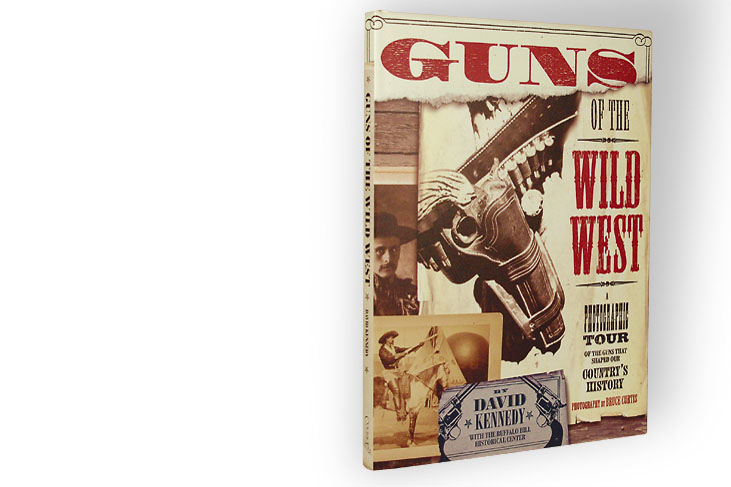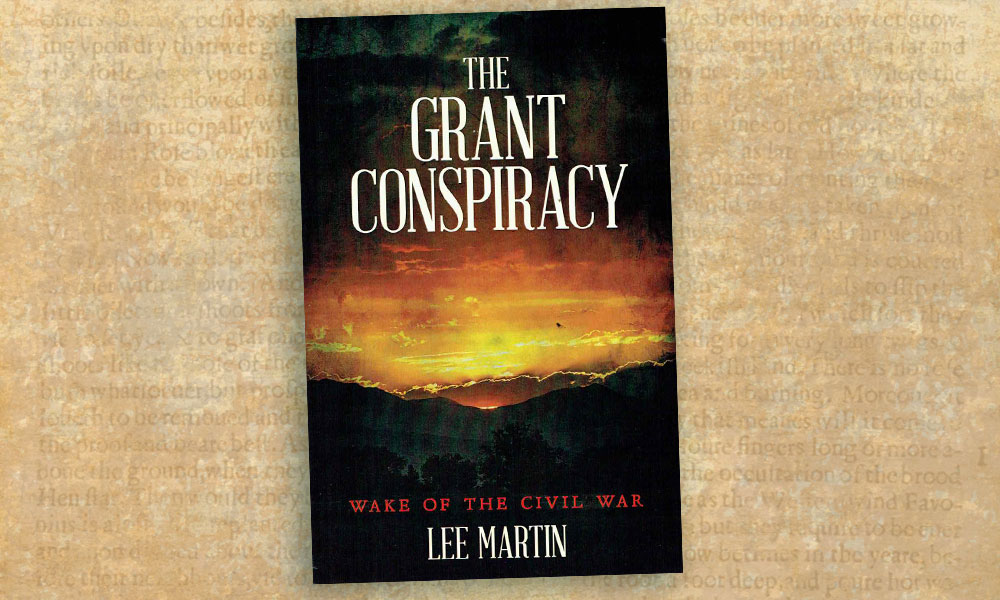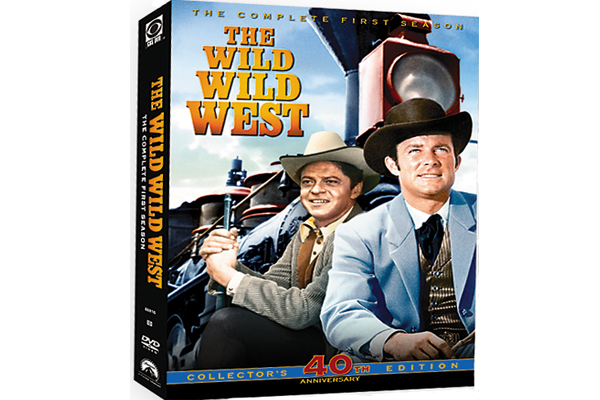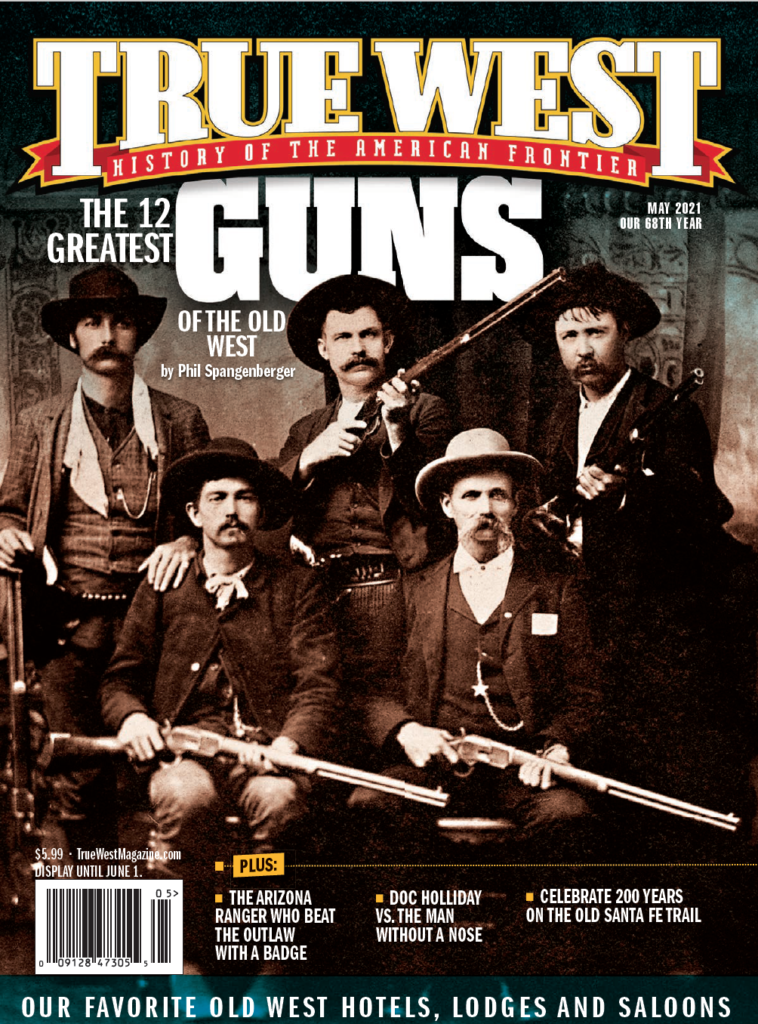True West considers these the most significant workhorses of the frontier.

– firearm photo courtesy Rock Island Auction Company –
“The Gun That Won the West!” “Which gun was that?” you may ask, but, as any serious arms enthusiast would tell you, regardless of advertising or promotional rhetoric, no single firearm tamed the American frontier by itself. Rather, a number of different guns were significant in settling our western territories.
The American West was conquered over a period of decades, beginning with the birth of the industrial revolution, a time of great improvements in firearms technology. These guns were used by diverse people, who relied on them for sustenance, defense, conquest, protection of life and property, law enforcement and law-breaking.
After much consideration, I selected 12 firearms that were, in my opinion, key to settling our Western frontier. I’ve included six long guns and six revolvers, and I am presenting them in the order of their introduction and historical time frames. Many of these arms were significant in their own right, and led directly to the introduction of other famous firearms.
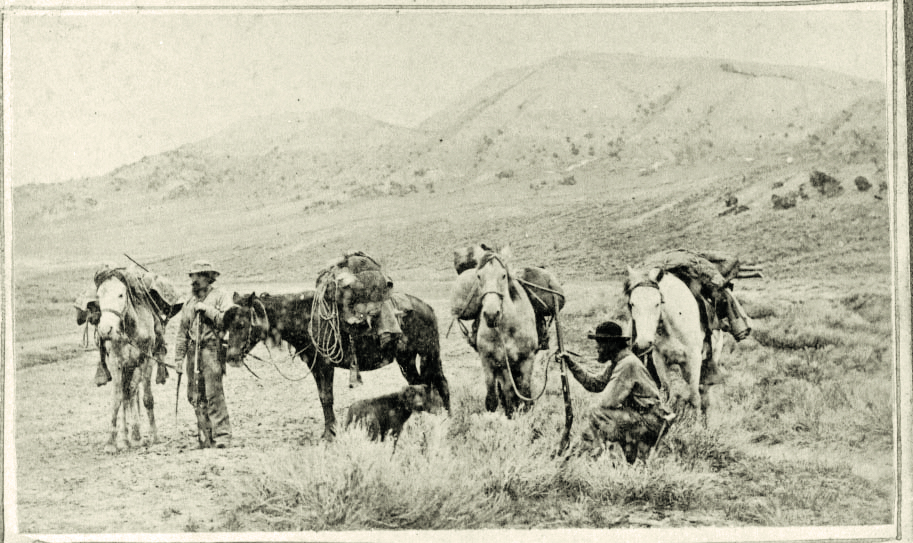
– True West archives –
Hawken Plains Rifle
The powerful and rugged muzzle-loading flintlock and caplock plains rifles were designed to replace the longer, slender and often less powerful Pennsylvania rifles used during the initial period of our westward movement. Heavy, shorter and more powerful, these plains rifles were carried by explorers, immigrants and the mountain men who were involved in the Rocky Mountain fur trade of the early 19th century. While a number of fine gunsmiths, including H.E. Dimick, J.P. Gemmer and others, turned out such rifles, it was the gun shop of Samuel and Jacob Hawken that became the standard by which all other plains rifles were judged. Produced in St. Louis, Missouri, where the style was originated by Hawken, the heavy, large bored, full and half-stock muzzleloaders were more powerful arms produced to shoot the large and dangerous Western game, and were better suited for use on horseback—an important factor in the West. Plains rifles were made from the early 1800s through the 1870s, and the Hawken (1830s-1860s) was the best known of the breed. Hawken customers included Kit Carson, Jim Bridger, Mariano Modena, Jedediah Smith, John C. Fremont and William F. Cody.
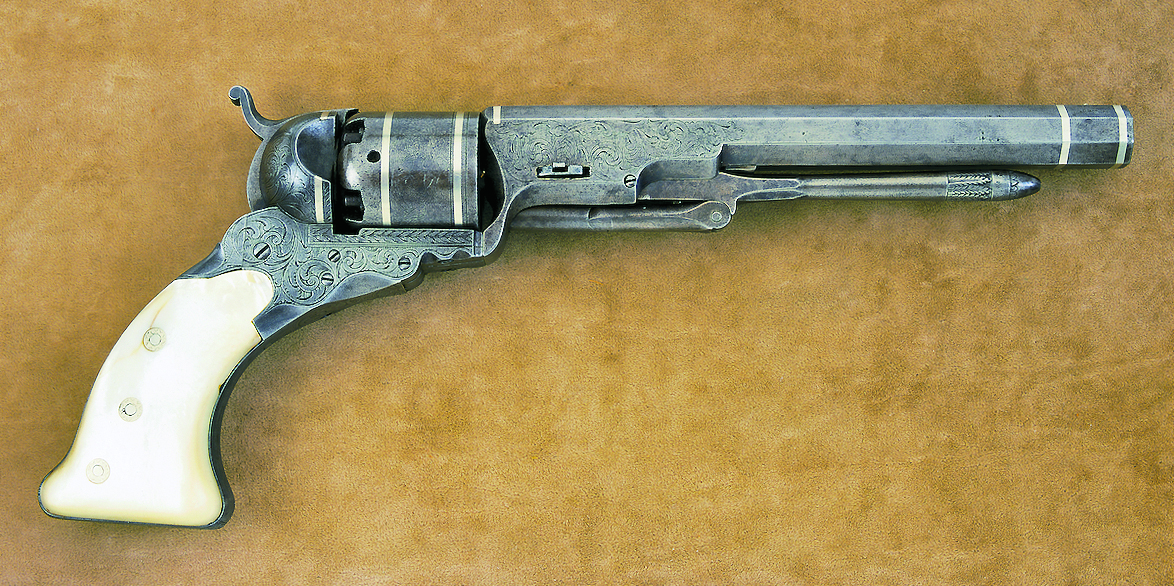
– Photo by Paul Goodwin, firearm courtesy Little John’s Auction Service –
Colt Paterson Revolver
Despite not being a successful business venture for Samuel Colt, this five-shot, cap and ball single-action became the first practical “revolving pistol.” Although only around 2,850 revolvers were made, this was the handgun that revolutionized revolvers for all time. The Paterson (its name comes from the city in New Jersey where it was manufactured) was produced in a number of small calibers and model variations ranging from pocket-sized “Baby” Patersons, to larger mid-powered belt revolvers. However, it was the long-barreled .36 caliber Texas Paterson version of this first Colt that was put to such deadly use against the Comanches by the early Texas Rangers. It also saw service in the Mexican-American War (1846-48), the California gold camps and to some extent in the Second Seminole War in Florida. Patented in 1836, the Paterson was not actually produced until the following year and production ran until 1842.
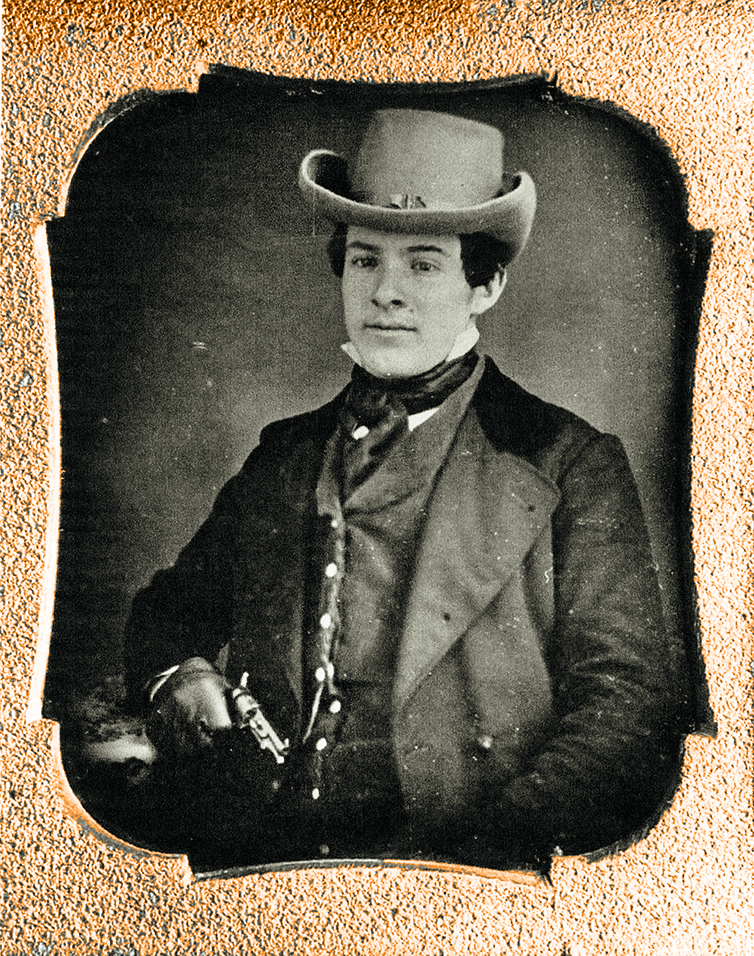
– Courtesy Herb Peck, Jr. collection –
Colt 1849 Pocket Model
Despite its small size—or perhaps because of it—Colt’s 1849 Pocket cap and ball revolver became Colt’s best-selling revolver of the 19th century, and, arguably, the world. With around 330,000 examples produced from 1850-73, this .31 caliber, diminutive “Five-Shooter” became a favorite with the public and the military alike (though never issued). Thousands were purchased in the pre-Civil War West, especially in California, where they sold for many times their factory retail price. Sam Colt, always the clever businessman, determined the need for such a gun and realized that he could eliminate many of the manufacturing steps and parts required in his large Dragoon revolvers to produce an inexpensive, lightweight sidearm.
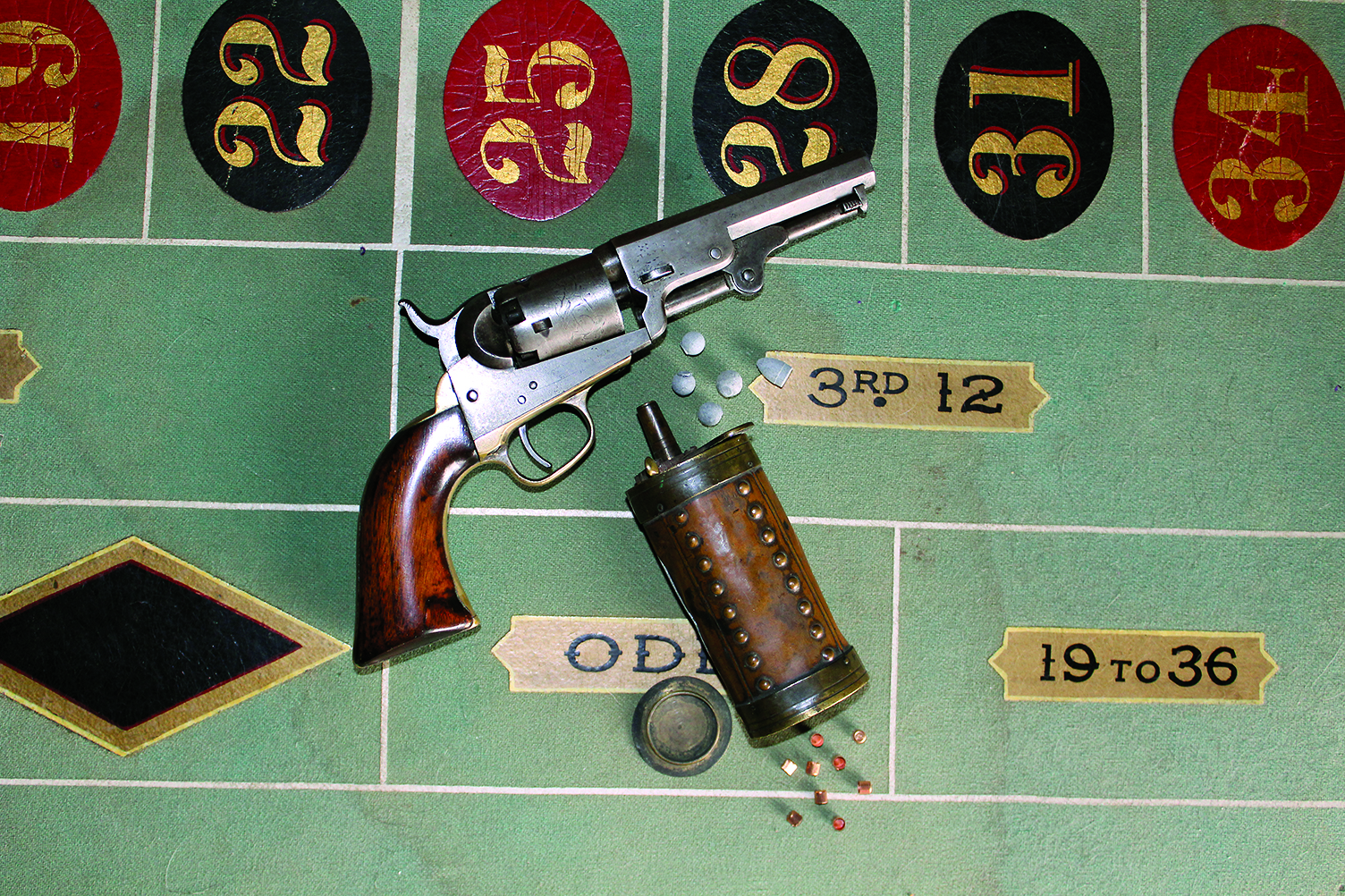
– Phil Spangenberger –
The little 1849 Colt quickly became a favorite with miners, gamblers, merchants, lawmen, women of ill repute and soldiers. For male or female, Colt’s Pocket ’49er was an ideal, easily handled defensive firearm. This was the gun that sold so well it put Colonel Sam Colt in business for keeps.
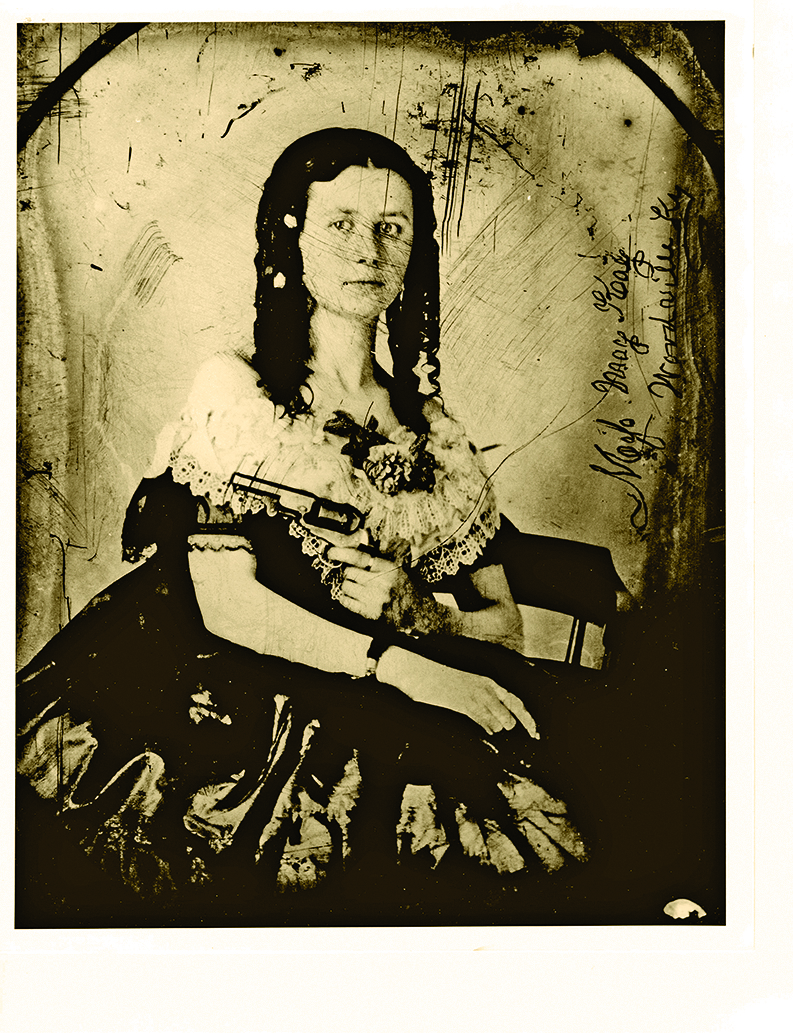
– Courtesy Herb Peck, Jr. collection –
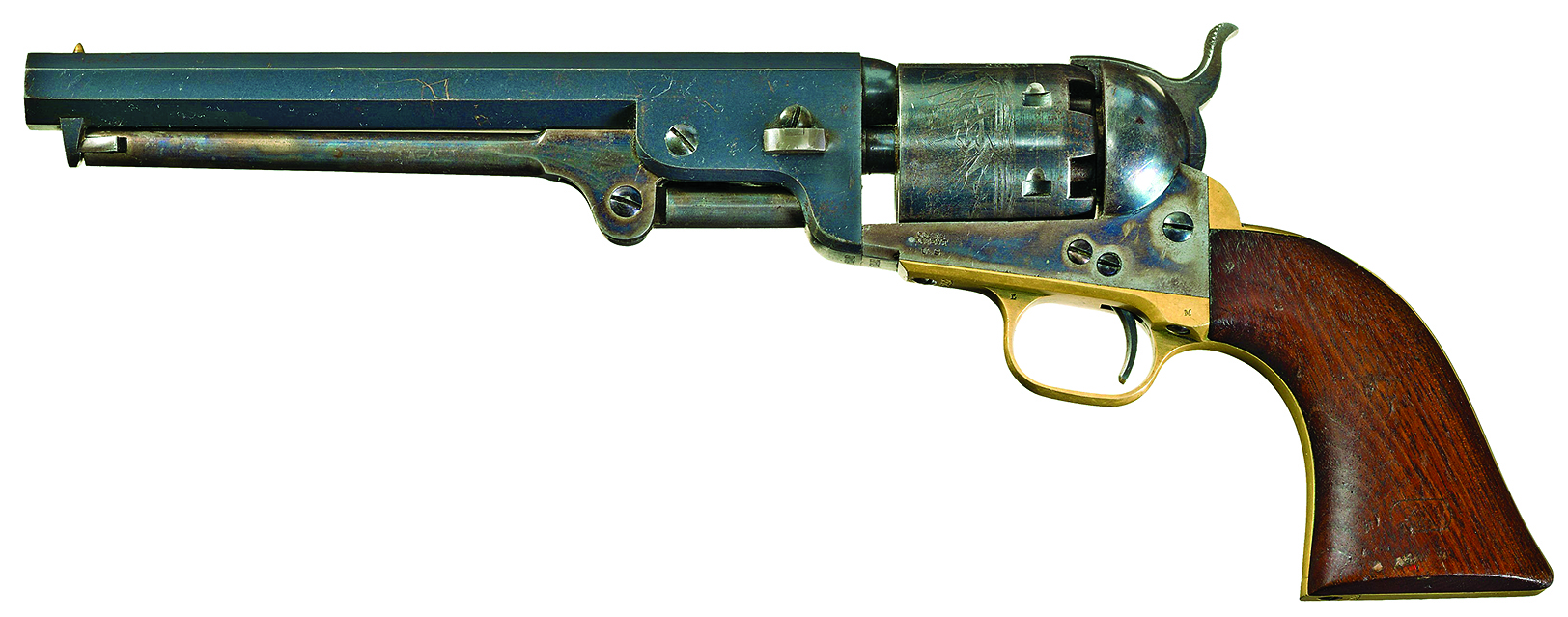
Colt 1851 Navy Revolver
One of the best balanced and smoothest-handling belt-sized revolvers of the caplock era, Colt’s 1851 Navy model could easily be called the “Percussion Peacemaker.” Preferred by many over other sidearms of the pre-metallic cartridge era, it’s perhaps best known as James Butler “Wild Bill” Hickok’s favorite sidearm, as well as the personal favorite of good and bad men alike, including the James-Younger outlaw gang, the Texas Rangers, the Pinkerton detectives, California bandit Tiburcio Vasquez, Texas shootist John Wesley Hardin, Maj. Frank North and the Pawnee scouts, and Col. (later Confederate general) Robert E. Lee, while stationed in antebellum Texas.
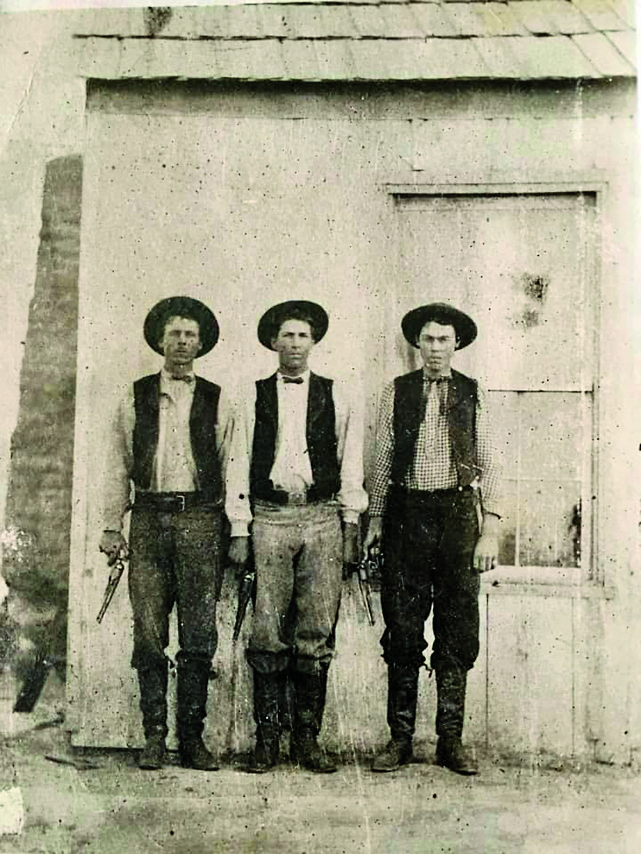
– Photos Courtesy Phil Spangenberger –
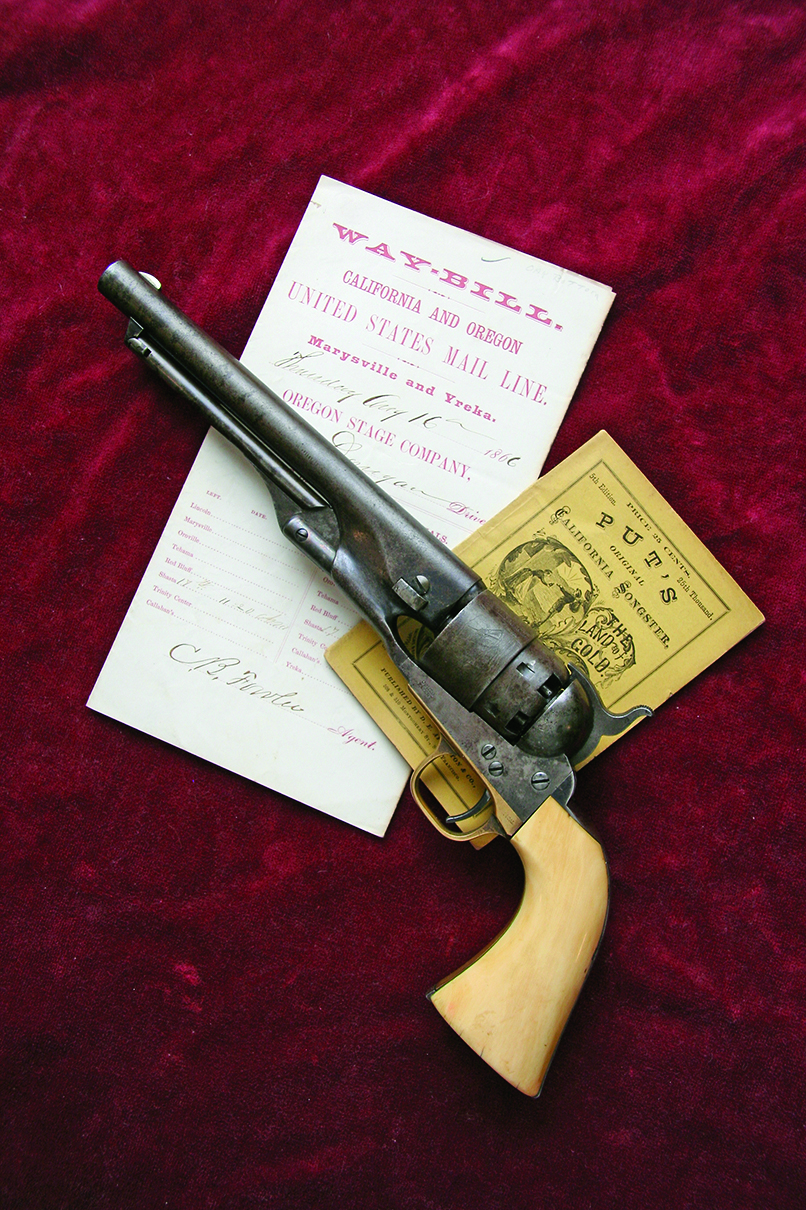
Like its smaller cousin, the 1849 Colt, in the goldfields of California, the Navy model sold for far more than its retail price back east. Nearly a quarter-million of these .36 caliber six-guns were turned out from 1850 to 1873. During the 1870s, a number of them were converted to take .38 caliber metallic cartridges. Despite the availability of more modern revolvers, the Navy Colt remained in use well into the final decades of the 19th century.
1860 Colt Army Revolver
Produced from 1860 until 1873, Colt’s 1860 Army model is the company’s third most-produced percussion handgun, and as such is considered by many the epitome of .44 caliber percussion revolvers. Designed as a lighter, easier to carry and handle successor to the big and somewhat cumbersome Dragoon revolvers, it was an immediate success. Of the 200,500 Army models turned out, 127,156 were purchased by the Union government during the Civil War, and thus it became the primary revolver used by federal troops during that bloody conflict. Whether in original caplock or converted metallic cartridge form, it also saw great use. The ’60 Army was easily holstered on a man’s hip, and it had plenty of stopping power—nearly that of the big cumbersome Dragoon. This eight-inch-barreled six-gun (and the few thousand that were turned out with 7½-inch barrels) quickly became a solid favorite with frontiersmen of the mid-19th century. It was an issue weapon to the U.S. Cavalry, the Texas Rangers, as well as bad men like John Wesley Hardin, Mormon avenger Porter Rockwell, the James brothers and Texas outlaw Sam Bass.

– Phil Spangenberger –
Springfield Trapdoor Rifle
Known on the frontier as the “needle gun” due to its long firing pin, the Springfield trapdoor started life in 1865 as the Allin converted Civil War muzzleloader, chambered to fire, at first a .58-caliber rimfire, metallic cartridge, then shortly thereafter the famed 2nd Model Allin Conversion Model 1866, was brought out in a sleeved barrel that handled the .50-70 centerfire cartridge. This was the rifle credited for the U.S. Army’s ability to withstand Indian attacks along Wyoming’s Bozeman Trail in the Hayfield and Wagon Box fights in 1867. It also was favored by hide hunters in the early buffalo-hunting years. Buffalo Bill killed hundreds of the great beasts for meat with his .50-70 Allin, affectionately called “Lucretia Borgia,” because he considered it beautiful, but deadly, like the infamous noblewoman of the Italian Renaissance.
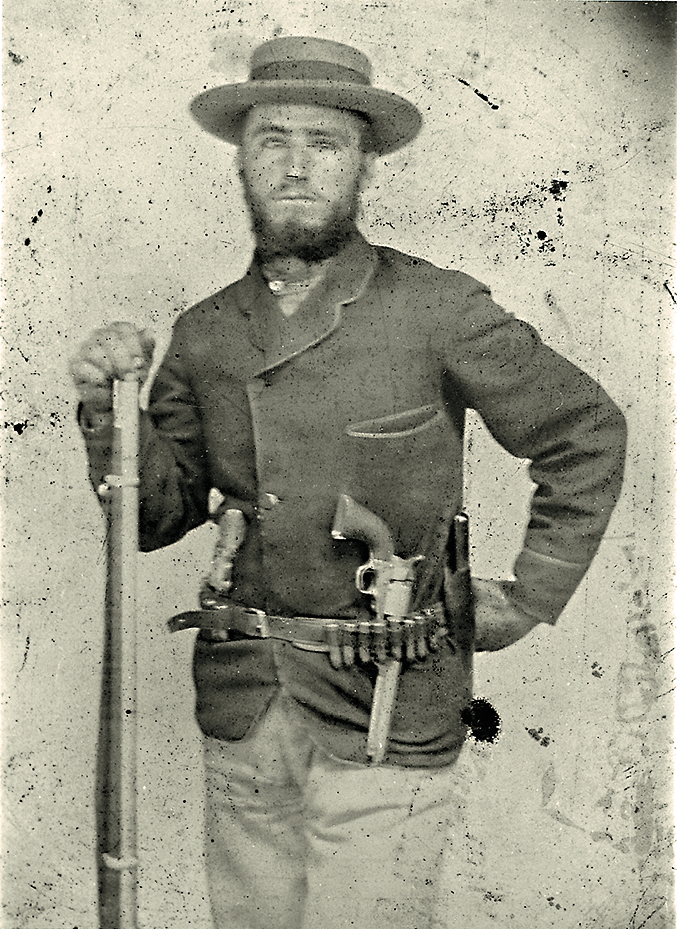
– Photo courtesy Al Fleming collection –
The 1873 Springfield—in rifle or carbine configuration—was the primary weapon of the Indian-fighting army from its inception that year until the mid-1890s. Initially used to subjugate Native Americans, it was later employed to protect Indians from unscrupulous whites. Carbines were carried by Custer’s 7th Cavalry at the Little Bighorn, while both rifle and carbine were used in other battles with the northern plains tribes as well as the Apaches, Comanches and other Southwestern Indians. It last saw combat in 1890 at Wounded Knee in South Dakota.
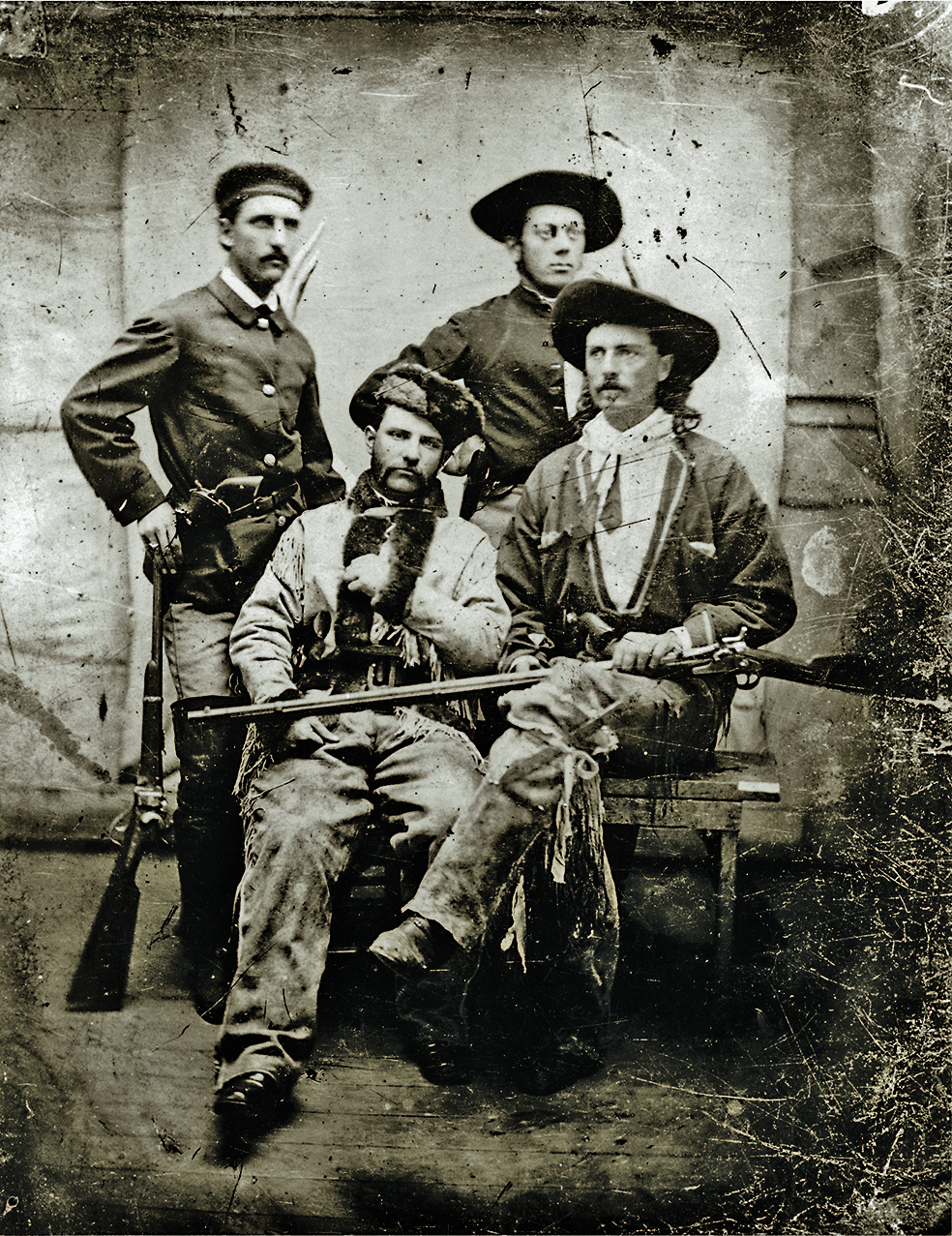
– True West Archives –
The moniker of “Trapdoor,” was not used until the second 1873 model was introduced with a trapdoor and compartment in the butt stock for storing cleaning tools and a broken shell extractor in 1877. Trapdoors were also popular with civilians who paid hefty prices for “lost” military Springfields, and many surplus trapdoors were converted to sporters, along with those offered by war surplus dealers to budget-minded homesteaders.

– Phil Spangenberger –
Winchester Model 1866 Rifle
Originally dubbed the “Improved Henry,” the brass-framed, .44 rimfire 1866 Winchester was often called the “Yellowboy” by Indians. Over 170,000 left the factory in 1866-98—long after stronger centerfire ammunition had eclipsed the ’66s weaker rimfire fodder.
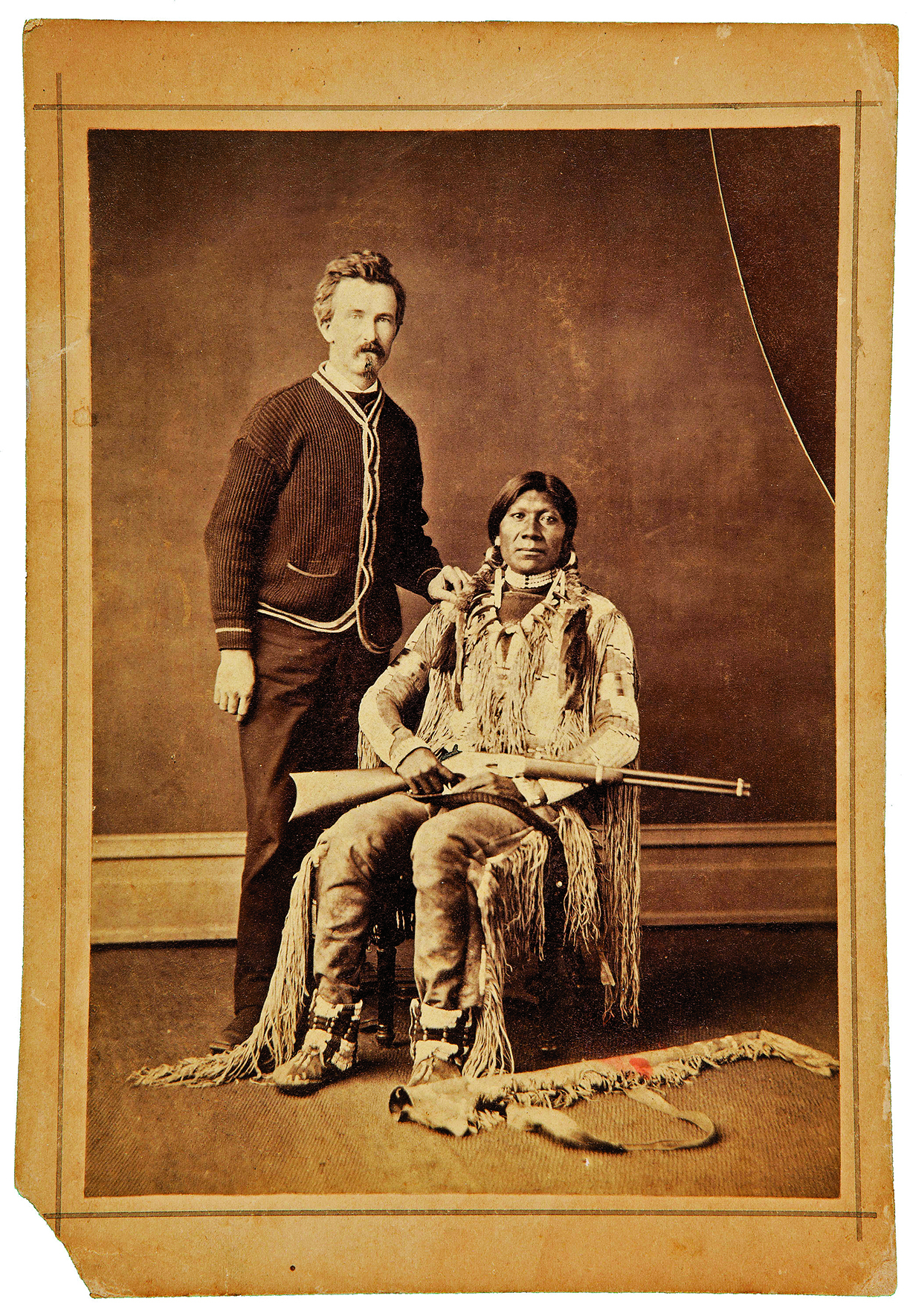
– Glenn Swanson Collection –
Coveted by American Indians, both for its repeating rifle qualities, along with its bright yellow brass receiver, the lever-action rifle was carried by the Union Pacific Railroad’s chief engineer, Gen. Grenville Dodge, desperado Bill Doolin, Sioux Medicine Man Sitting Bull, along with many Texas Rangers, Army scouts, military officers, hunters and ranchers. A number of 1866 Winchesters were among those many repeating rifles used by Crazy Horse’s warriors to defeat Custer’s troops at the ill-fated, June 1876 battle of the Little Bighorn in Montana.
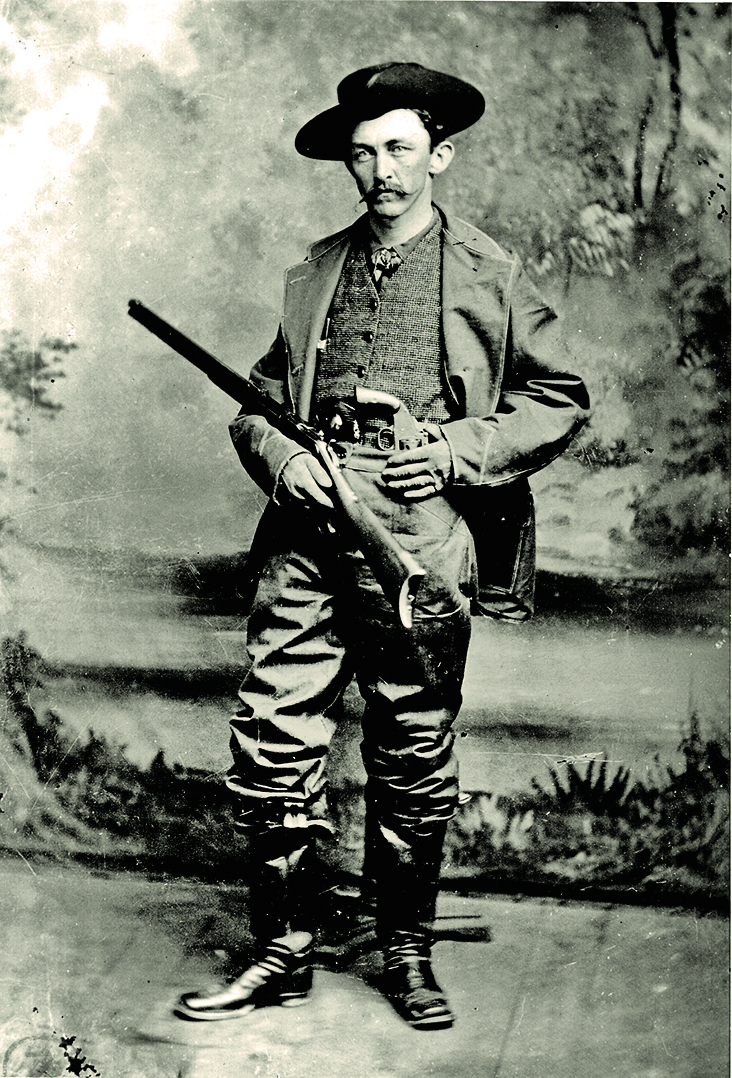
firearm—the 1873 Winchester.
– Phil Spangenberger Collection –
S&W Model 3 “American” Revolver
Introduced in 1870, the .44 centerfire Smith & Wesson Model 3, First Model “American” stands as the first practical large bore, U.S.-made metallic cartridge revolver. This six-shooter laid the groundwork for future successful S&Ws, namely the .44 Russian, .45 Schofield and the New Model No. 3 Single Action.
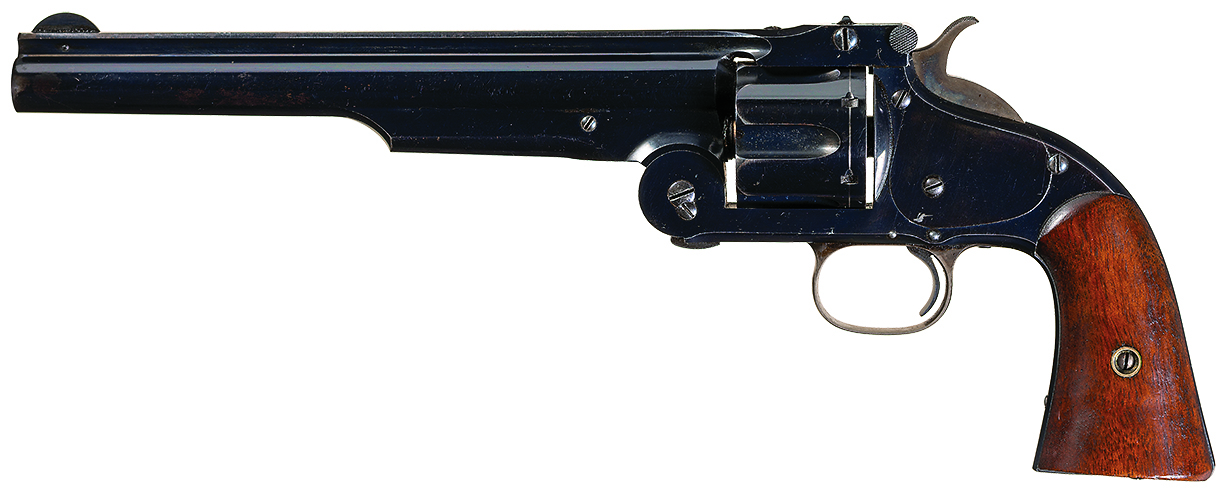
– COURTESY ROCK ISLAND AUCTION COMPANY –
Highly popular in the West, this top-break six-gun was issued to the U.S. Cavalry, and was also favored by William F. Cody, Army scout “Texas Jack” Omohundro, El Paso City Marshal Dallas Stoudenmire and Gen. William Palmer, builder of the Denver and Rio Grande Railroad, and was part of the armament of the famed Wheeler U.S. Geological Survey of the southwestern United States (1871-73). The “Russian” variation of the Model 3 was carried by the notorious John Wesley Hardin, James Younger gang member Charlie Pitts, New Mexico sheriff Pat Garrett and gunman King Fisher, to name a few of the S&W’s admirers.
1874 Sharps Rifle
Commonly known as the “buffalo rifle,” this powerful single-shot firearm was credited by an 1887 government survey with shooting more buffalo than any other gun during the peak hide-hunting years of 1867 to 1882. Although the 1874 model was actually introduced in 1871, and based on the rare 1869 model, it wasn’t officially called the 1874 model until around 1876. Just 12,445 of the various model ’74s were made—including the popular target rifles—they did more to destroy the Plains Indians’ nomadic way of life than any other firearm.

The ’74 model was made to fire an assortment of .40, .45 and .50 caliber loadings and different barrel lengths and weights, with some guns weighing as much as 25 pounds. It was a borrowed 1874 Sharps “Big Fifty” (.50-90) that buffalo hunter Billy Dixon fired at the 1874 Battle at Adobe Walls, in the Panhandle of Texas, when he toppled an Indian off his horse, seriously wounding him, from a recorded distance of 1,538 yards. To the Indian warrior, the 1874 Sharps rifle was known as the “shoots far” or “shoot today, kill tomorrow” gun.
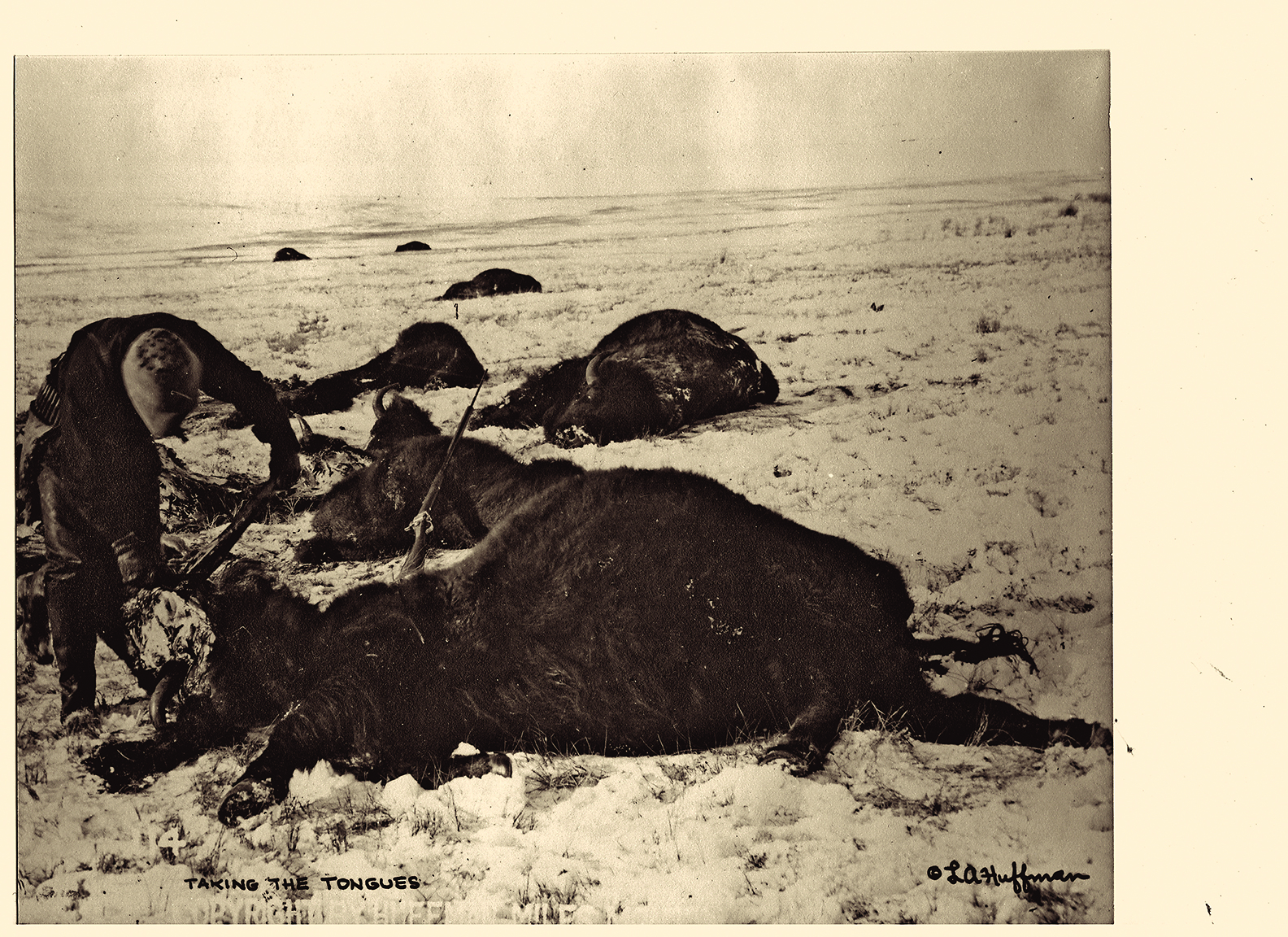
– True West Archives –
Colt 1873 Single Action Army
Undoubtedly one of the most recognized handguns in the world, Colt’s 1873 Single Action Army revolver was the hands-down favorite and the archetypical six-gun of the American frontier. Affectionately known as the “Peacemaker,” it is considered the best balanced, most ergonomically perfect revolver of the age. Originally designed as a cavalry sidearm, it rapidly became the choice of cowboys, lawmen—including the Texas Rangers, and later the Arizona Rangers—and outdoorsmen of all kinds, including those who rode the “Owlhoot Trail.”
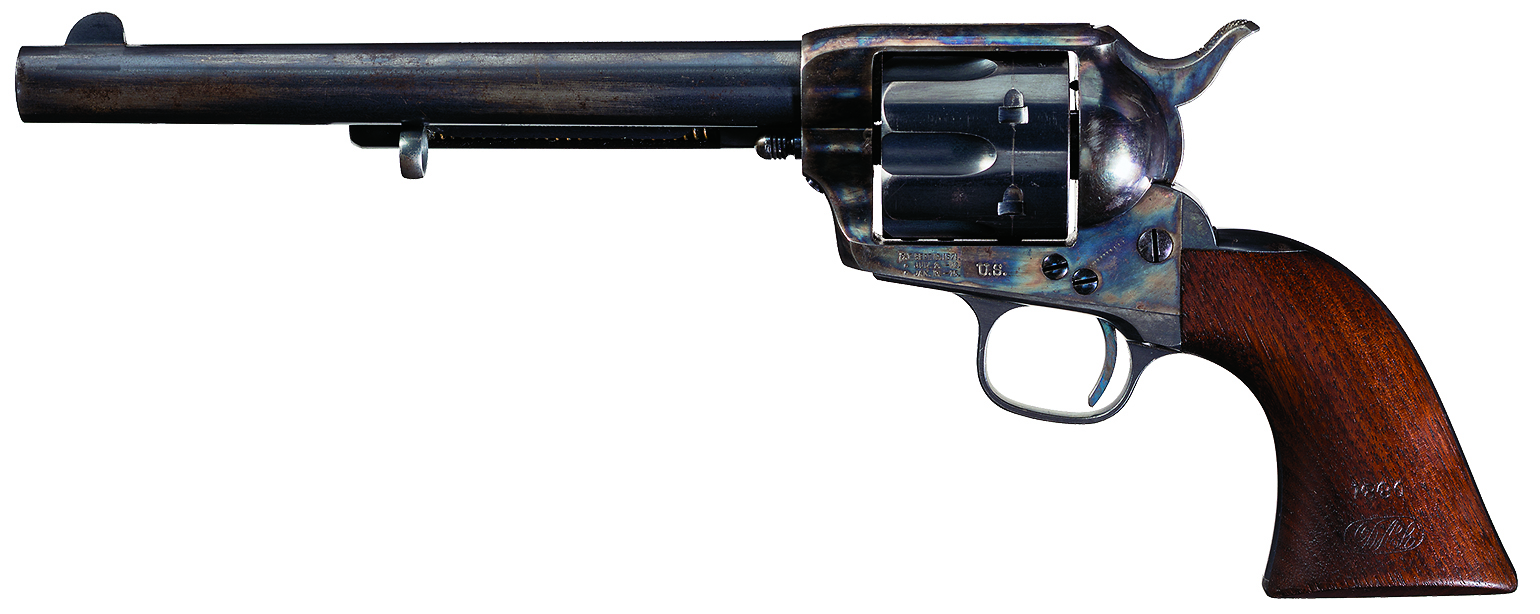
This is the smoke wagon that was the favorite of Western legends Wyatt Earp, Bat Masterson, the Daltons, John Selman, lawman Elfego Baca, Judge Roy Bean and countless others. Known by a number of colorful nicknames like the “equalizer,” “hogleg,” “Judge Colt and his Jury of Six” and others, it was produced in many powerful chamberings, most notably .45 Colt, .44-40, and .38-40. Colt’s 1873 model outsold all competitors with 192,000 made by the end of the 19th century. Colt’s Single Action Army is indeed the premier six-gun of the Old West.
1873 Winchester Rifle
It could easily be debated that the 1873 lever-action Winchester rifle is the most famous rifle of the Old West. The ’73 was Winchester’s first centerfire arm, and was manufactured in 1873-1919, with total of 720,000 guns made.
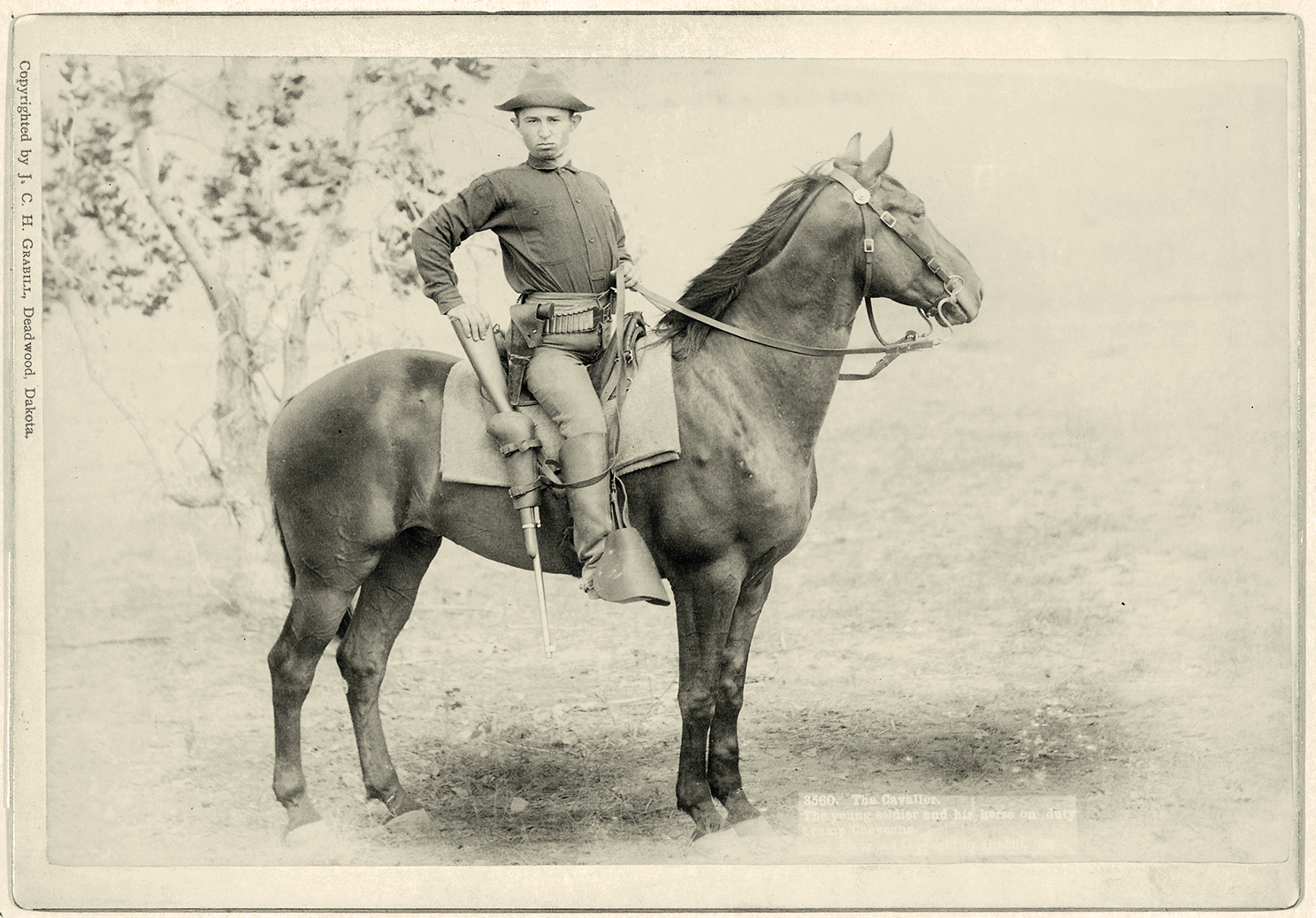
An estimated 525,000-plus left the factory by 1898. Like its parent model, the 1866, this slab-sided rifle quickly became the choice of horsemen throughout the West since it was ideally suited to a saddle scabbard, and its simple toggle and link internal action was easy to maintain in the field. It became the choice of hunters, cowboys, lawmen and outlaws, as well as outdoorsmen in several foreign lands. They were chambered for rounds.44-40, .38-40, and the .32-30, within a few years of the ’73’s introduction, a number of gun companies, like Colt, Remington and Smith & Wesson, started turning out revolvers chambered in Winchester calibers.
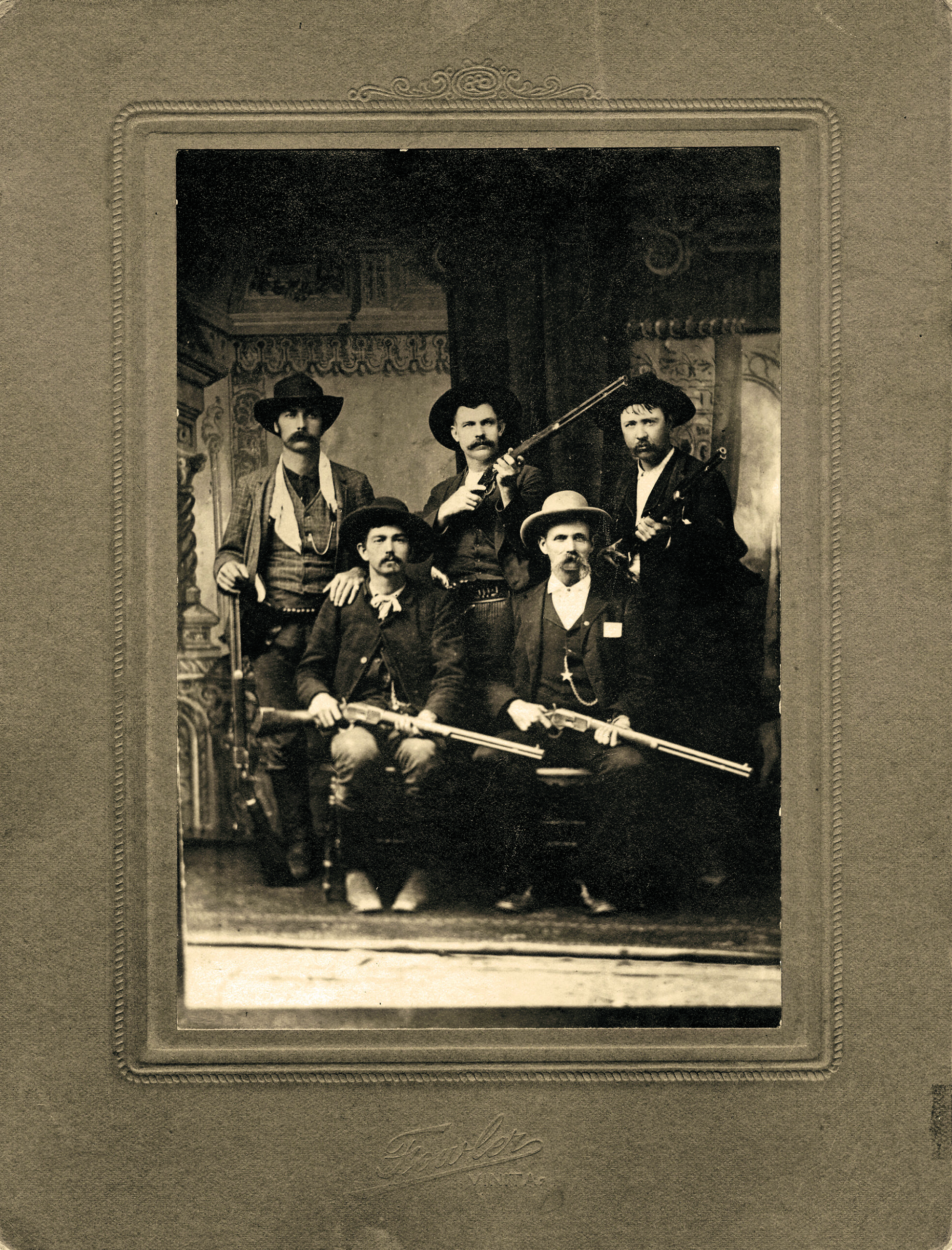
– Courtesy Fort Smith CVB –
This created the very practical and favored habit on the frontier of mating one’s rifle and revolver. This iron-framed lever gun was the premier choice of the post-1874 Texas Rangers, and was also used by Old West notables William F. “Buffalo Bill” Cody, Montana rancher Granville Stuart, Pat Garrett, and outlaws Butch Cassidy, Belle Starr and Billy the Kid.

– Courtesy Panhandle-Plains Historical Museum –
Double-Barreled Shotgun
Although this may come as a surprise to some gun aficionados, the double-barreled shotgun—in caplock or metallic cartridge—was one of the most important and oft-used firearms on the frontier. Many pioneers invested everything they had in order to make the overland trek out West, leaving little money for weaponry.

The single most versatile—and economical—gun for hunting and defense in a wild, often hostile, environment was—and still is—the double-barreled shotgun. Muzzleloader and breechloader scattterguns from domestic and foreign makers, were a mainstay of settlers, lawmen, express companies, American Indians, soldiers, gunfighters, miners, ranchers and hunters—everyone who needed a weapon realized the value of the old side by side. It was known as the crowd tamer because just the appearance of a shotgun could persuade any mob against carrying out violent acts. And, when hunting in hostile territory, one barrel, loaded with shot for game, and a second charged with a slug for defense, was often the preferred method. Yes, the old reliable double-barreled shotgun was the true workhorse of the Old West.
There they are, my top 12. Some readers may disagree with my final choices, but I feel everyone can agree that these guns at least qualify for consideration, and each played a significant part in taming America’s Wild West.
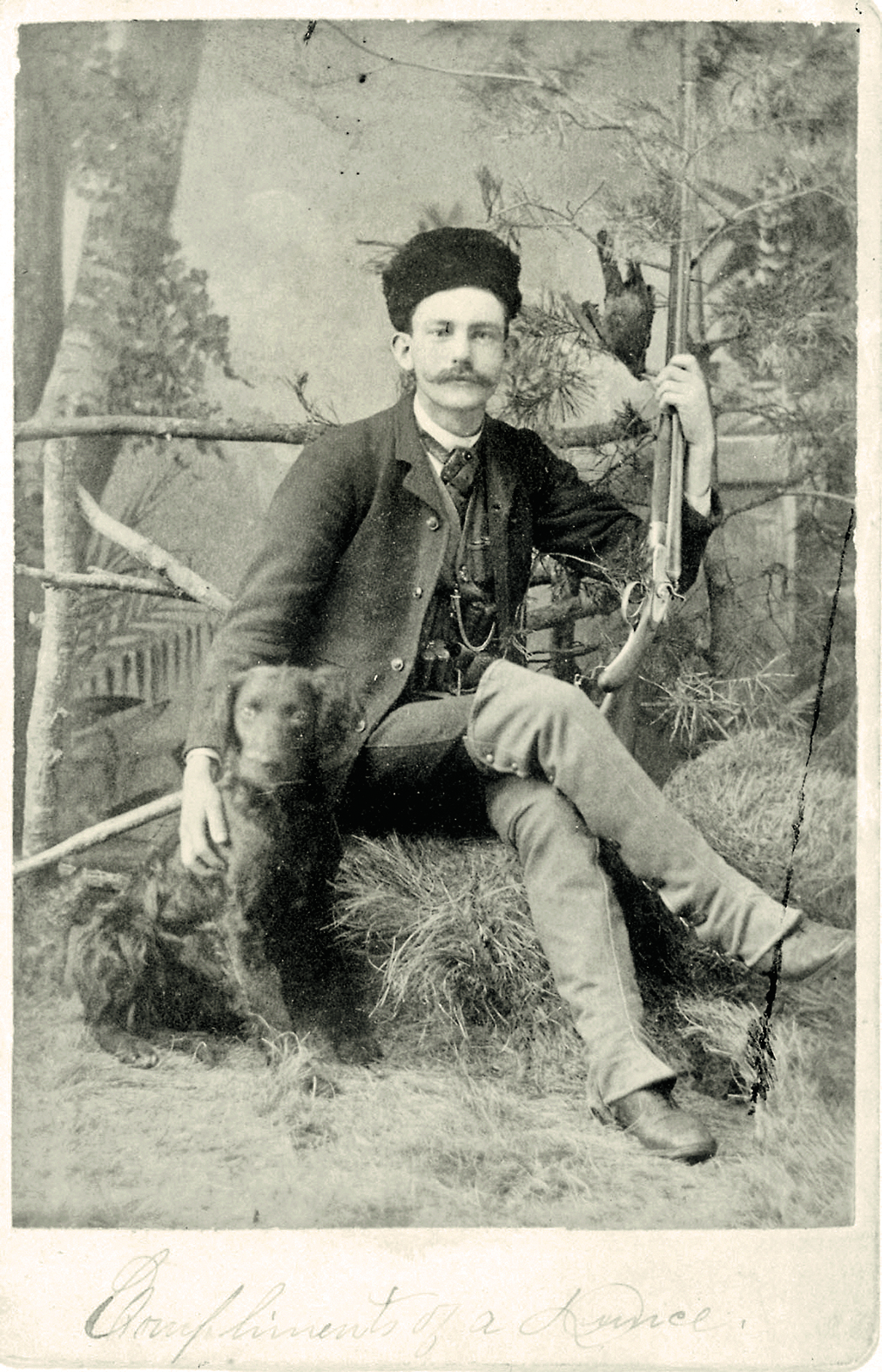
– Courtesy Phil Spangenberger Collection –
Phil Spangenberger has written for Guns & Ammo, appears on the History Channel and other documentary networks, produces Wild West shows, is a Hollywood gun coach and character actor, and is True West’s Firearms Editor.


